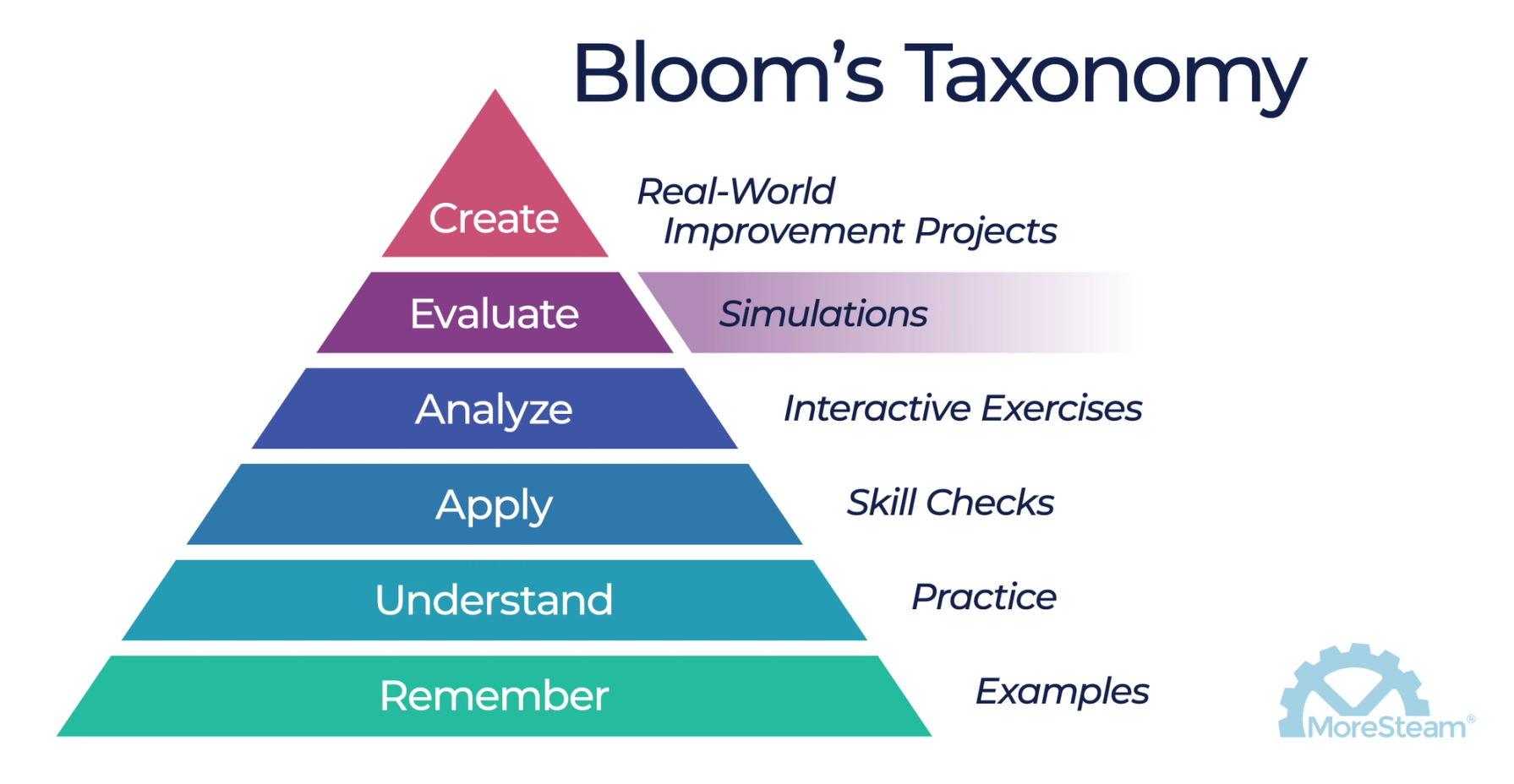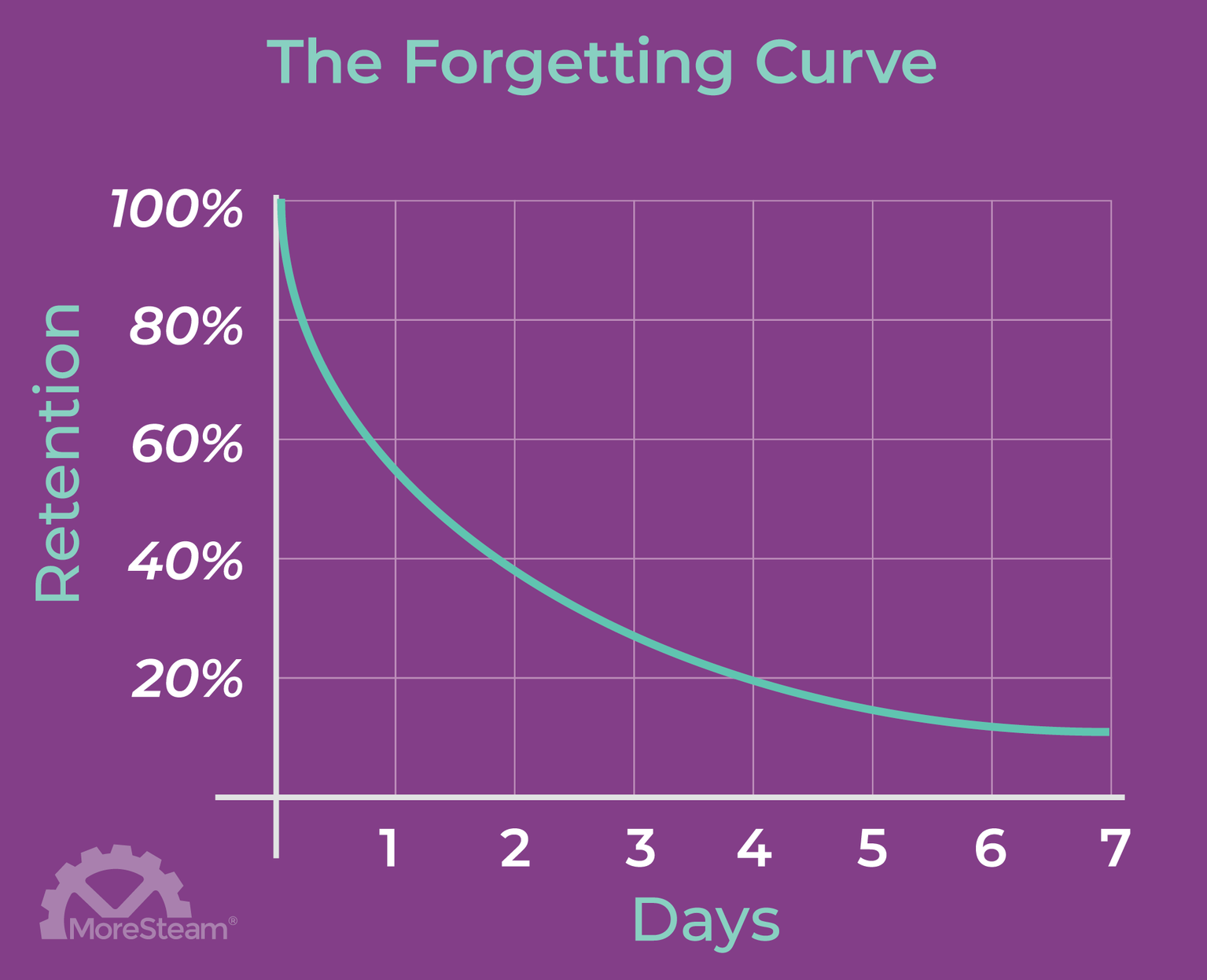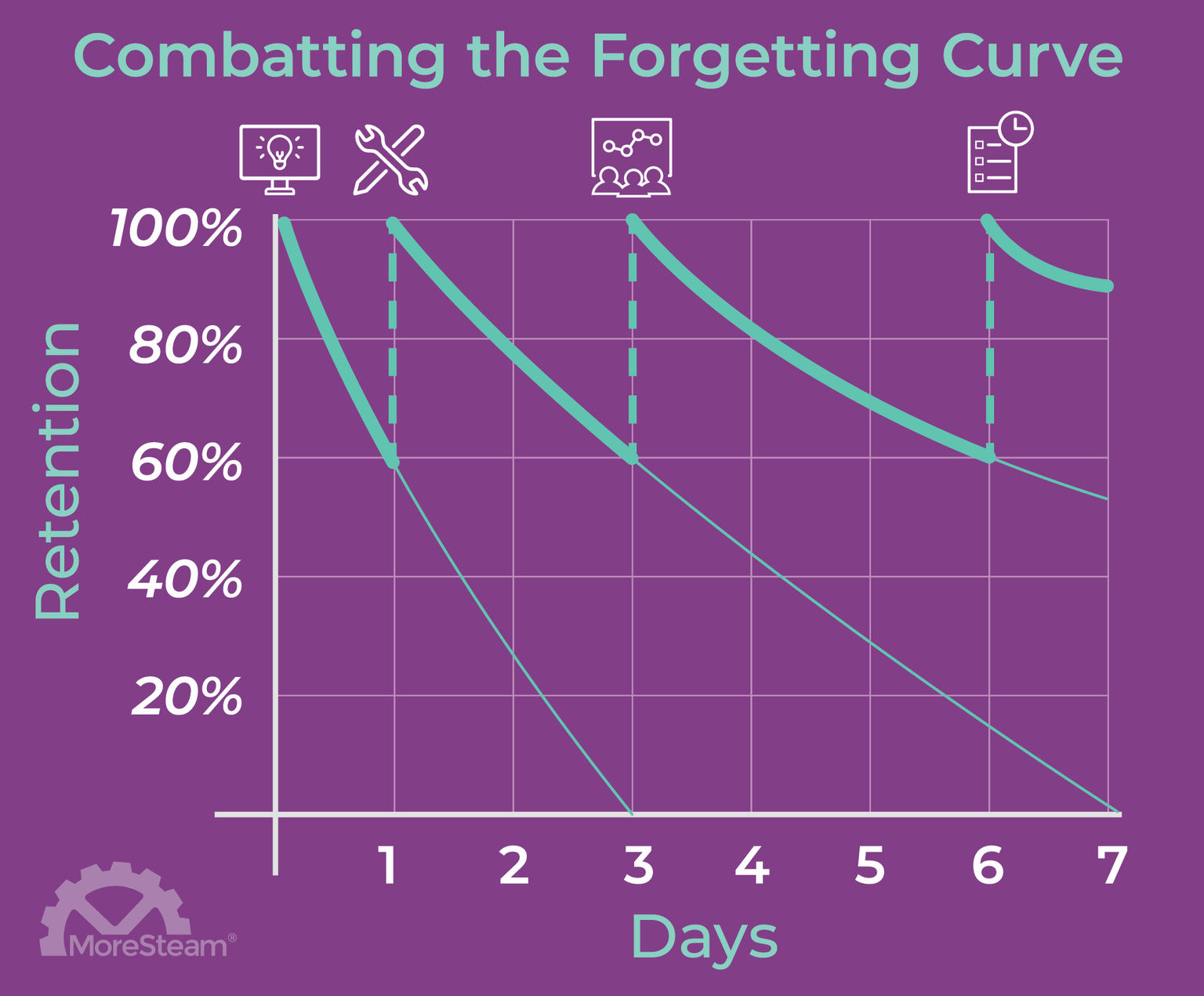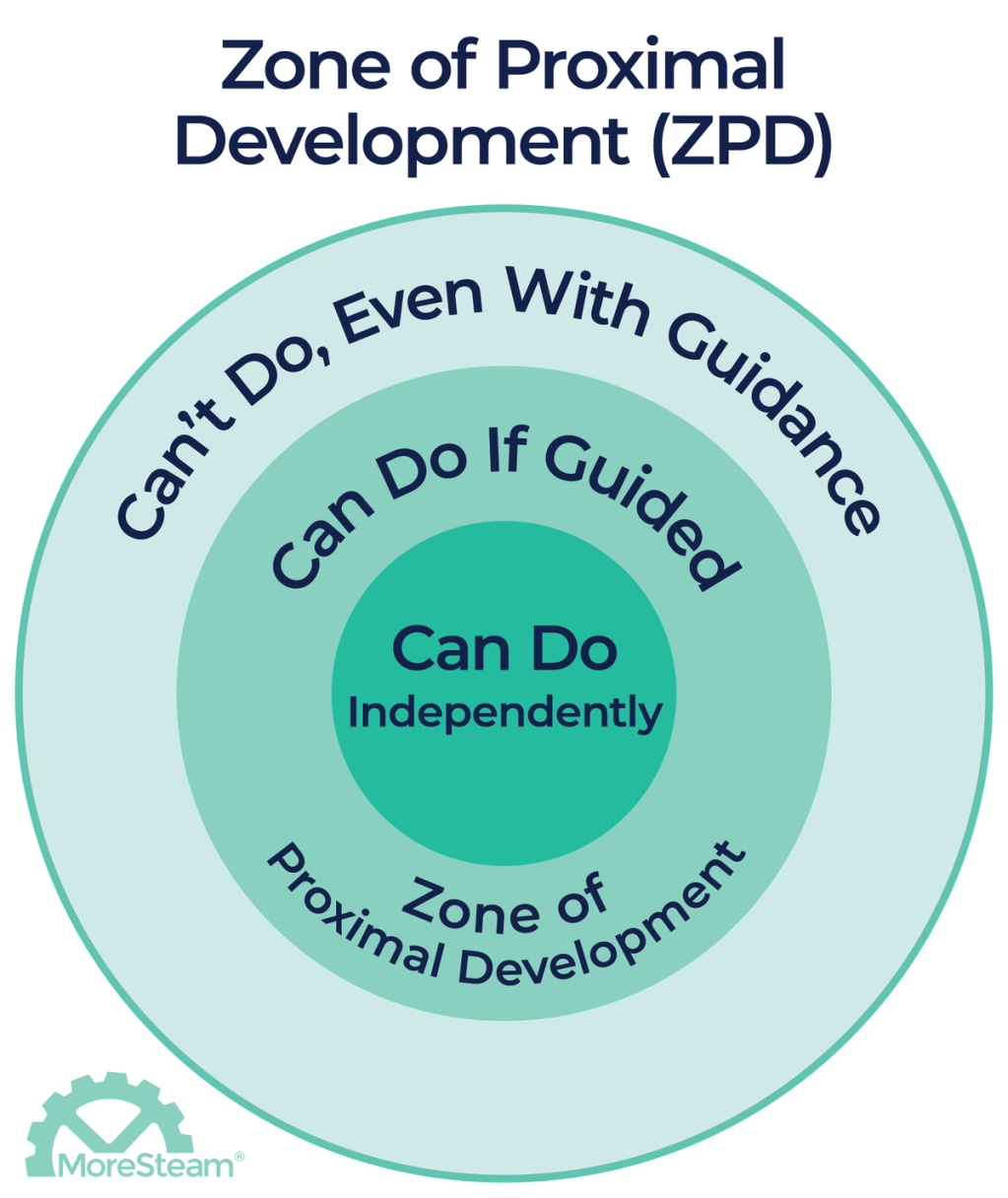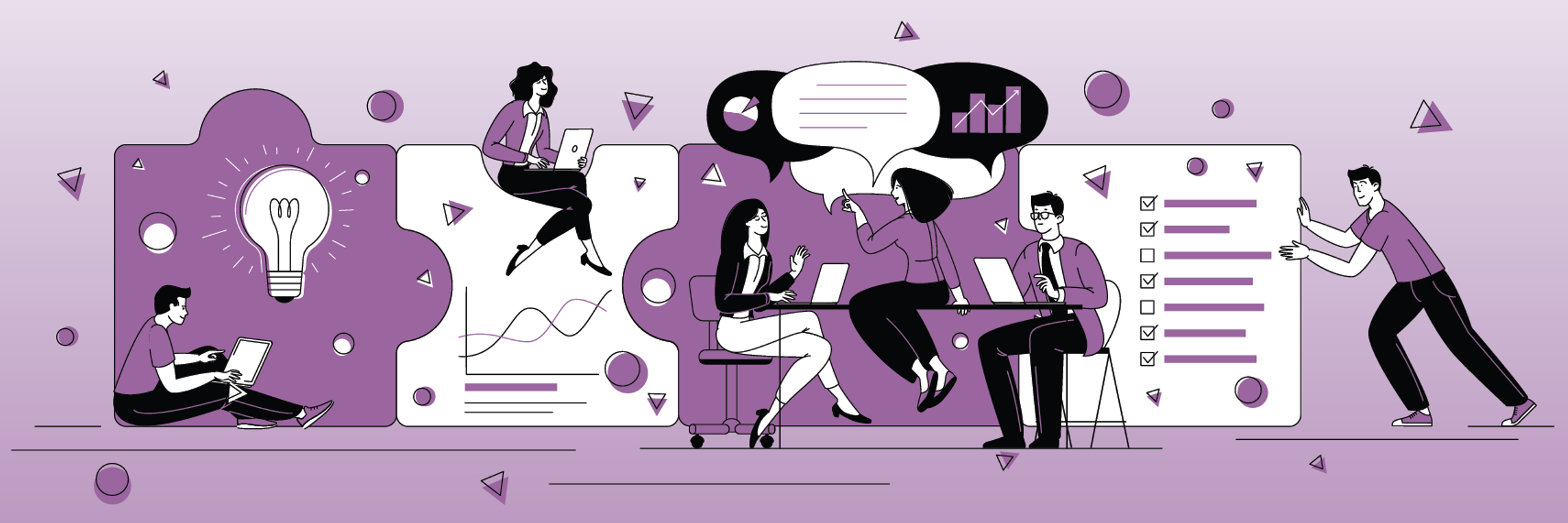
Beyond the Body of Knowledge: Lean Six Sigma Training for Real-World Capability
April 21, 2025As a new teacher, my training credentials certified me as “competent,” but I wondered, was I capable? Would I know what to do when an unfamiliar situation arose in the classroom? It didn’t take long to understand that my role wasn’t just about applying what I had learned in a book. Teaching was about navigating ambiguity and making a decision even when the “right” answer wasn’t clear.
By some conservative estimates, teachers make over 1,500 decisions per day, most of which are unplanned and in response to something unpredictable. Once, I had a student bring a turtle to homeroom in a shoebox. Luckily for everyone involved, I remembered at just the right moment that the biology teacher was looking for a classroom pet.
What prior experiences led to my capability in any given situation? In moments when I fell short, I wondered how I could have been better prepared.
What separates competency from capability?
Fraser and Greenhalgh’s (2001) article “Coping with complexity: Educating for capability " argues that capability is more than competence (p. 799).
They define the two terms as follows:
- Competence – what individuals know or are able to do in terms of knowledge, skills, and attitude.
- Capability – the extent to which individuals can adapt to change, generate new knowledge, and continue to improve their performance (Fraser & Greenhalgh, 2001).
The big challenge in any profession is preparing individuals to respond effectively in novel situations. To meet this challenge, this blog will explore three key concepts from educational theory: Bloom’s Taxonomy, the forgetting curve, and the zone of proximal development. Together, these concepts offer insights into how to structure a Lean Six Sigma training program that supports candidate growth from competency to capability.
Traditional education and training programs tend to fall short when it comes to addressing the question of capability. Instead, training programs focus on assessing an individual’s competency; for starters, it’s simpler and more cost-effective to score an exam than to provide individualized feedback on a project or mentorship.
In Lean Six Sigma deployments, competency is demonstrated through one’s ability to apply what we refer to as the Body of Knowledge, particularly in the context of certification. But if you consider the capacity of process improvement professionals to effect meaningful change, we should also talk about the Body of Capability.
The Body of Capability reflects what one can actually do, especially in real-world, high-stakes environments where decision-making, adaptability, and execution matter just as much as technical expertise.
It takes into account knowledge and skills, but also:
- Behaviors: communication, resilience, curiosity, and collaboration.
- Judgment: knowing which tools to use when navigating organizational dynamics and making decisions under uncertainty.
The chart below illustrates the difference between competency and capability in a Lean Six Sigma training program. It compares outcomes from a curriculum focused only on knowledge and skills with one that also develops a candidate’s capability to apply those skills in real-world situations.
Competency vs. Capability in Lean Six Sigma Training Programs
| Competency | Capability |
|---|---|
| Competency : Identify process bottlenecks using a process map | Capability : Design and implement process changes to eliminate bottlenecks and validate improvements with data |
| Competency : Calculate process capability | Capability : Interpret capability metrics in a business context and make data-driven recommendations |
| Competency : Identify value-added vs. non-value-added process steps | Capability : Redesign processes to eliminate waste while maintaining quality and customer satisfaction |
| Competency : Write a problem statement using a project charter | Capability : Align project objectives with a business strategy and gain stakeholder buy-in |
| Competency : Analyze control charts for common and special cause variation | Capability : Develop a control plan and coach process owners on sustaining improvements |
| Competency : Create a Pareto chart to display defect frequency | Capability : Use a Pareto chart to prioritize improvement efforts and get the most “bang for your buck” |
As the chart shows, programs that focus only on competency often fall short of the goal of developing more effective, capable problem-solvers within the organization. Note that building capability also means developing behaviors and judgments such as critical thinking and leadership skills.
If it’s more problem solvers we want, how can we shift the way we evaluate candidates for not only their knowledge and skills, but also their ability to problem solve?
I once heard an educator say, “Change the way students are evaluated, and suddenly, the curriculum and programming have no choice but to follow.” Perhaps the answer lies in assessment.
This type of training goes beyond passing a certification exam.
Learning is a progression, and while it is an iterative process, everyone starts with foundational knowledge. Bloom’s Taxonomy, a framework that outlines levels of learning from basic recall to higher-order thinking and creation, helps learning and development experts guide learners from one skill to the next. This framework categorizes the cognitive level of learning activities based on the verbs involved. Lower-order activities use simpler verbs like “remember” and “recall”, while higher-order activities — the ones that push learners from competence to capability — incorporate verbs like “evaluate”, “create”, “plan”, and “develop”. That’s why simulations and project work are so valuable: they give learners the chance to practice complex thinking skills that can’t be easily measured on a traditional exam.
Simulations are a form of “experiential learning” that require candidates to engage in higher levels of Bloom’s Taxonomy. They often involve a sequence of activities with inputs and outputs in which the system dynamics resemble real life. Unlike traditional instruction, simulations allow learners to apply concepts in settings where their decisions influence the outcome. This not only deepens understanding but also allows candidates to practice navigating complexity.
A Lean Six Sigma program should aim to assess candidates holistically. A holistic assessment in education is an approach that evaluates a learner’s overall performance, not just isolated skills or knowledge. It looks at how well a learner can apply what they know in a meaningful, real-world context, often across multiple dimensions, such as critical thinking, communication, collaboration, creativity, and problem-solving.
A Multi-Dimensional Approach to Assessment
- eLearning and Exams build and assess foundational knowledge
- Simulations provide a space to practice and problem-solve
- Project coaching guides students through tackling real-world improvement projects
This multi-dimensional approach to assessment gives a more complete picture of readiness and capability, which is especially important when training is intended to drive change in complex, real-world environments.
Building foundational knowledge with eLearning
Think of a complicated skill you've mastered – maybe perfecting your golf swing, cooking an elaborate dish, playing a musical instrument, or learning a new language. Chances are, you didn’t get there just by reading a book or watching a PowerPoint presentation. Chances are, acquiring that new skill was probably an uncomfortable, at times, frustrating process.
Learning a new skill often feels this way. That’s especially true for adult learners, who tend to resist situations that feel uncertain. Adult learners want to know why they’re learning something and how it connects to their daily work. A strong kickoff event before a Lean Six Sigma training program helps set the tone, communicate the “why”, and build confidence from the start. Once participants understand the purpose and relevance, they’re more open to engaging with the material.
Completing the eLearning is a key measure of competency and sets the foundation for building capability at the next level.
Simulations bridge the gap between theory and practice
At MoreSteam, we believe in teaching beyond just what's needed for a certification exam. This belief is reflected in everything we design, from our software and curriculum to our simulations.
Simulations are one aspect of what Fraser and Greenhalgh describe as “nonlinear learning” (p. 799). Nonlinear learning includes case-based discussions, simulations, small-group problem-solving, and team-building exercises. Simulations, in particular, help candidates make sense of where eLearning or traditional classroom instruction ends. They activate higher-order thinking within Bloom’s Taxonomy. Candidates get a chance to analyze and evaluate multiple data sources, navigate competing stakeholder interests, and manage group dynamics – all designed to strengthen their ability to eventually lead their own improvement projects. They are also the perfect way to create a safe space to experiment, make mistakes, and build confidence before moving into high-stakes situations.
Simulations fight the forgetting curve
Simulations also combat what is known as “the forgetting curve,” a concept in education and psychology that describes how information is lost over time when there is no opportunity to reactivate it. The impact of the forgetting curve is alarming.
A theory originally documented by Hermann Ebbinghaus in the late 1800s, he found that after just one day, we forget up to 50% of new information. After a week, only about 20% remains. If learners don’t apply what they’ve learned, it fades fast. This can lead to costly gaps in performance outcomes and missed opportunities for candidates to reach their full capabilities.
Reactivation strategies, especially robust, memorable, story-driven learning activities, help learners remember much more and for longer. In addition to MoreSteam’s facilitator-led simulations, which are typically implemented at the end of traditional learning, candidates also have the opportunity to complete a self-paced DMAIC simulation embedded within their eLearning. This gives them a chance to immediately apply new skills instead of waiting until the end of the program, helping to reinforce knowledge before it fades.
This graph shows the positive impact of “spaced learning”. Repeated exposure and retrieval strengthen memory and slow forgetting. Each time learners revisit or apply a concept, retention jumps back up. Simulations are a powerful tool in this process by forcing learners to retrieve and apply skills in a realistic setting, at the right time, they naturally reinforce long term retention.
The forgetting curve chart visually represents how quickly information fades when it isn’t reinforced. Immediately after learning, retention is high, but without review or application, it drops sharply within the first few days. As time goes on, the rate of forgetting continues, leaving only a small fraction of the original knowledge intact by the end of the week. This curve highlights why active re-engagement, such as through simulations, practice, or discussion, is so important. Each time a learner revisits or uses the material, retention spikes again, creating a more gradual decline over time. Spaced learning helps interrupt the forgetting curve and supports long-term memory. Simulations are especially effective because they create repeated opportunities to retrieve and apply new skills in context, reinforcing learning when it matters most.
This curve highlights why active re-engagement, such as through simulations, practice, or discussion, is so important. Each time a learner revisits or uses the material, retention spikes again, creating a more gradual decline over time. Spaced learning helps interrupt the forgetting curve and supports long-term memory. Simulations are especially effective because they create repeated opportunities to retrieve and apply new skills in context, reinforcing learning when it matters most.
Coaching and the zone of proximal development
Simulations give participants a chance to engage in higher levels of Bloom’s taxonomy, nonlinear learning, and group-based problem-solving. However, they don’t fully capture the complexity of real-world environments. At the final level of Bloom’s Taxonomy, “Creation,” learners go beyond understanding or applying knowledge. They synthesize ideas, generate original work, and build something new from what they’ve learned. In Lean Six Sigma training programs, this level is achieved through project execution, requiring learners to combine elements of everything they have learned in new ways and propose solutions to problems.
In the article “Mapping the Distance: From Competence to Capability” (Jain, Oweis, & Woods, 2023), Vinayak Jain shares his experience as a young medical student struggling with the gap between competence—what he learned in school—and capability—his ability to react effectively during high-pressure situations in an ICU.
Jain emphasizes the critical role of mentorship in bridging this gap, noting that “Refining diagnostic frameworks, developing mental heuristics, and recognizing individual blind spots and biases cannot be attained without supportive coaching and mentorship” (p. 403). Similarly, in Lean Six Sigma, developing true capability requires more than just mastering tools and concepts. It takes guided practice, reflection, and a strong coaching relationship to help candidates internalize frameworks, apply critical thinking, and build the confidence to lead process improvement efforts under pressure.
The Zone of Proximal Development, or ZPD, describes the space between what a learner can do independently and what they can achieve with guidance or support. The most effective learning happens in that middle zone, where a little support leads to big growth. This is where coaching and mentorship make a huge difference.
Think of ZPD as strength training with a spotter. If the weight is too light, you’re not building much muscle. If it’s too heavy, you can’t lift it at all. But when your spotter gives just enough assistance to help you push through the toughest reps, that’s when you get stronger. Learning works the same way—the right amount of challenge, with just enough support, leads to the biggest growth.
Belt candidates may understand tools like process mapping or root cause analysis in theory. However, applying them in complex, real-world situations, especially when navigating organizational dynamics, can feel overwhelming. This is where coaching becomes essential. A mentor helps break down the challenge, provides strategic guidance, and models critical thinking. This enables the learner to stretch their capabilities without becoming discouraged.
Over time, with consistent coaching, tasks that once required support move into the learner’s independent skillset. In this way, mentorship is a key mechanism for moving learners through the ZPD and building true capability and confidence.
Evaluate your training program
While many training efforts focus on building competency, what most organizations really need is a plan to evaluate capability. To support this, training programs should be structured to support both the Book of Knowledge and the Book of Capability.
Simulations and coaching play a key role here, by supporting higher-order thinking as outlined in Bloom’s Taxonomy. They give learners a chance to analyze, evaluate, and create, bridging the gap between knowing and doing. Simulations also interrupt the forgetting curve by reinforcing knowledge and improving long-term retention.
Finally, coaching helps learners push just beyond their current skill level into the Zone of Proximal Development, the space where meaningful learning and growth take place. With timely guidance and support, candidates build not just skills but also the confidence and capability to enact meaningful change within their organizations.

Instructional Designer • MoreSteam
Mel Coyle is a licensed educator with experience in course development, classroom teaching, large scale project management, and data-informed practices. She joined the MoreSteam team in December 2022 as the eLearning Instructional Designer. She is responsible for improving the clarity and alignment of current lessons, adding more practices, skill checks, and exam questions, and analyzing question data.

